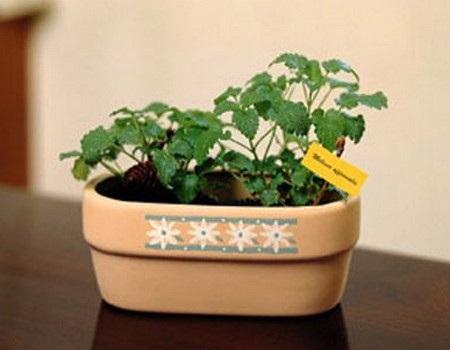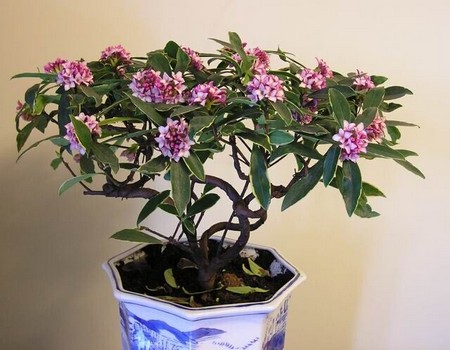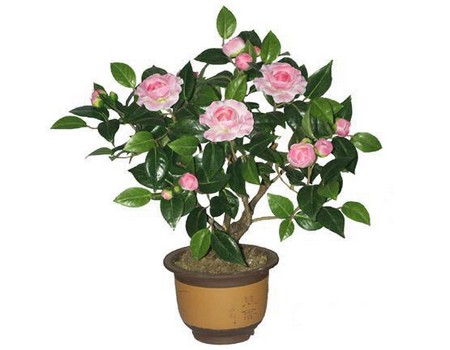The method of making bonsai in the top ten merits of broad leaves
There are many varieties of the ten broad leaves, the common ones are the dense thorns of the broad leaves, the thorns at the edge of the leaves, the thorns of the leaves without thorns, and so on, which are often used to make bonsai. Ten meritorious services stem clump, branches and leaves sparse, leaf shape changeable, evergreen all the year round. Especially when the old leaves change color to orange and red and green, it is very beautiful and elegant. It is a kind of bonsai suitable for all seasons, and it also has the effect of watching flowers and fruits.

Reproduction and selection of materials:
The top ten credits can be propagated by cutting, ramet or sowing. Cutting propagation is divided into hardwood cuttings and tender wood cuttings, hardwood cuttings should be carried out in early spring in March, cutting 1-2-year-old strong branches as cuttings, 20 cm long, cut along with cutting, on half-shaded land, moist and loose soil, or inserted into plain sand or vermiculite. Softwood cuttings can be carried out during the rainy season, cutting fully developed but not lignified semi-mature branches as cuttings, 15 cm long, cut on the sandy soil seedling bed, the depth is 12 to 23 cm of the cuttings. When cutting, use bamboo chopsticks to punch holes in the seedbed first, then insert the cuttings into B B, press tightly with fingers at the base, close the soil and cuttings, pour enough water, build a shed for shade, water frequently when it is dry and hot, spray it with a fine-hole spray can sooner or later, keep the soil moist, take root and sprout in about 50 days, and transplant and cultivate large seedlings in the following spring.
Most of the ten meritorious works are wild in the bushes under the mountain stream forest, so you can choose the old piles with peculiar roots to dig, cut the branches, first cultivate them in the field, raise embryos, and wait for the germination of new branches and leaves, and then process them in the pot the following spring. In this way, it is thick and short, with many branches and elegant posture, which can be made into beautiful foliage bonsai.
Planting:
Before planting, the plant should be soaked in clean water for about half an hour to improve the survival rate. when planting, it is appropriate to hit the mud on the root and stem, and then plant it in the loose and breathable sandy soil, and then keep the soil moist without stagnant water. Often spray water to the plant to increase air humidity and ensure survival. Before long, many new buds will grow in the eyes of the buds. You can choose several ideal strong buds to retain, and the rest of the buds will be erased. In the future, the management of water and fertilizer will be strengthened to make the plant grow vigorously. In the spring of the following year, the branches germinated in the previous year were properly truncated to promote the emergence of new robust branches.
In the process of making broad-leaf bonsai, directional buds can also be cultivated. The method is that when a bud is needed in a certain part of the plant, it can be sprayed with water frequently. Before long, new buds will grow in this position.
Trim:
The top ten broad leaves grow rapidly, and the branches can be truncated after 2 to 3 years of cultivation, and some dilapidated leaves should be removed in time to maintain the beauty of the tree. If you do not watch the bonsai cultivation, cut off the residual flowers after flowering, so as not to consume too much nutrients and affect the growth.
Shape:
Ten broad-leaf works can be processed into different forms of bonsai, such as jungle type, double-dry type, single-dry type, oblique dry type, water-facing type, cliff type and so on. Its modeling method is mainly pruning, supplemented by flat binding. The banding time should be carried out after the Lignification of the new branch, because the branch is flexible and not easy to break, while the new branch is very easy to break because it is tender and brittle, so it does not make the flat binding shape. The trunk and old branches are relatively brittle and hard, and can only be pulled or twisted properly with wire or brown wire within a certain range, so as to avoid breaking the branches. Because of its large leaves, the crown mostly uses natural shape to show its natural beauty of being unrestrained and sparse.
The processing of bonsai is similar to that of Phyllostachys pubescens, which is mainly pruned and planted, and generally does not make climbing. Processing should be carried out before germination in spring, so that the branches and leaves are uneven, dense and layered. Tree shape, to a book of multi-dry type and root type is the most common, there are co-planting type and straight dry type and so on. A multi-dry type and co-planting type should pay attention to the changes of height, density and before and after. The root lifting type can properly lift the main root when planting, pile the soil on the basin surface, and then gradually remove the soil pile when watering, so that the root is exposed.
Turn the basin:
Turn the basin once before germination every spring, and the basin soil should be sandy soil with rich humus, loose air permeability and good drainage.
Time: 2019-05-26 Click:
- Prev

Production method of Daphne odora bonsai in Phnom Penh
Daphne has whirling branches, soft strips and thick leaves and elegant posture. Phnom Penh Daphne belongs to the evergreen shrub of the genus Daphne. It is a variety of Daphne. No matter when it is, the planting of plants is a kind of technical work for examiners, which requires not only knowledge, but also enough patience and care.
- Next

The method of making tea plum bonsai
Tea plum can be used as a bonsai, placed in the study, meeting hall, hall, door, windowsill and other places to add elegance and splendor. The green leaves of tea plum are beautiful and beautiful, and when the flowers bloom, they are like stars, and they are extremely beautiful, no matter they are used to decorate halls, pavilions or balconies.
Related
- Fuxing push coffee new agricultural production and marketing class: lack of small-scale processing plants
- Jujube rice field leisure farm deep ploughing Yilan for five years to create a space for organic food and play
- Nongyu Farm-A trial of organic papaya for brave women with advanced technology
- Four points for attention in the prevention and control of diseases and insect pests of edible fungi
- How to add nutrient solution to Edible Fungi
- Is there any good way to control edible fungus mites?
- Open Inoculation Technology of Edible Fungi
- Is there any clever way to use fertilizer for edible fungus in winter?
- What agents are used to kill the pathogens of edible fungi in the mushroom shed?
- Rapid drying of Edible Fungi

